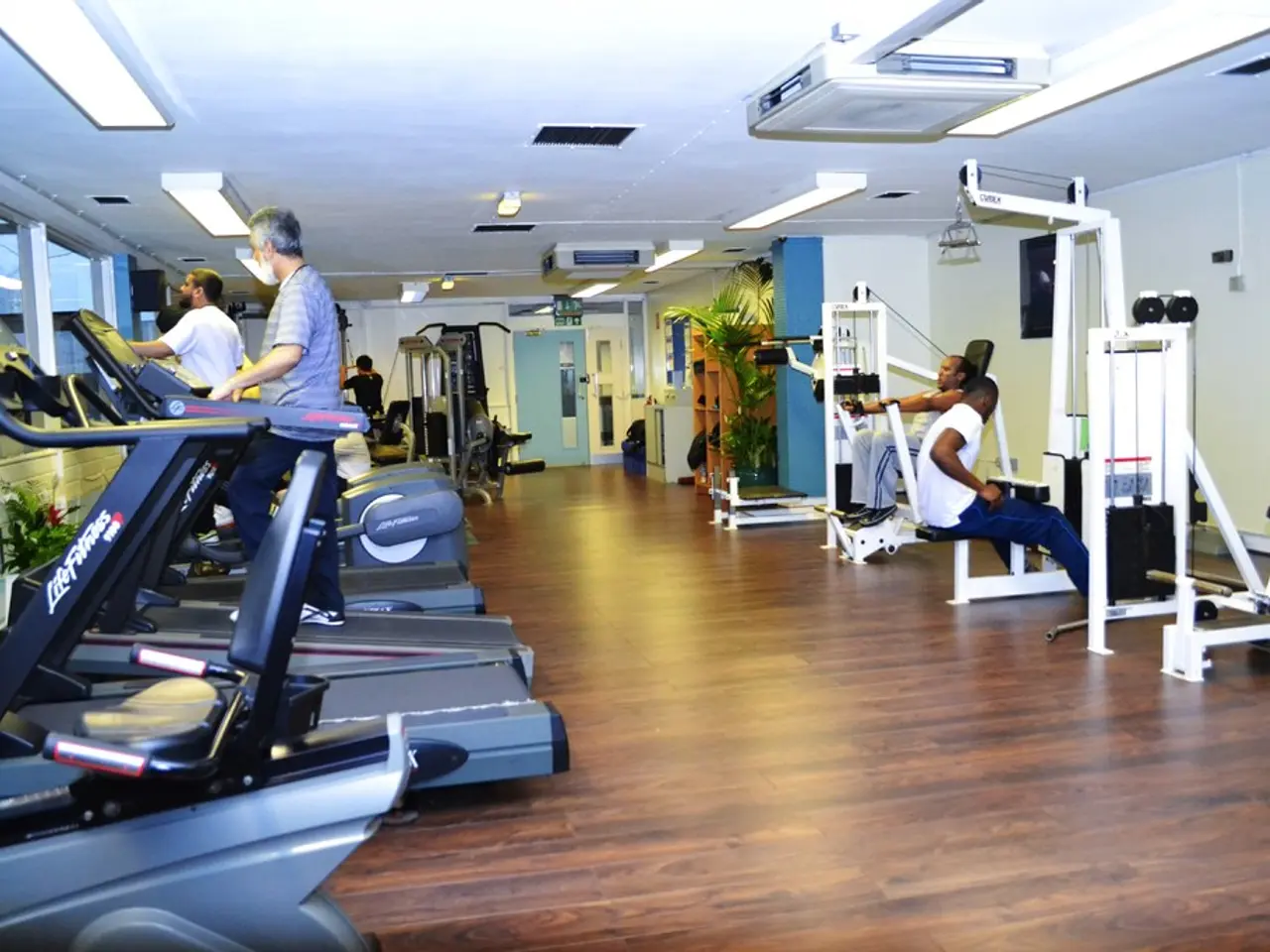Growth in demand for fitness services is pushing larger players into the market, despite a relatively slim profit margin of 7-9%.
The fitness industry in Russia is experiencing a significant transformation, with an increase in labor costs and a shift towards digital and home-based fitness solutions.
According to recent data, labor costs in the fitness industry have risen by 11-12% year-to-date. This trend is mirrored in the growing adoption of online and home-based fitness, a global trend driven by demand for privacy, convenience, and control. Solo sessions are dominating, with mobile fitness apps integrating performance tracking and personalized feedback making workouts more tailored and accessible.
In addition, there is a rising adoption of smart sportswear and connected fitness equipment like smart treadmills, wearables, and AI-driven personalized workout plans. This reflects the increasing digital integration into fitness routines.
Despite these advancements, the fitness industry in 2025, including in Russia, is not without its challenges. High costs of smart fitness devices and connected equipment may limit adoption in certain economic segments. Space constraints in urban living environments reduce the potential for home equipment use. Maintaining long-term user motivation and engagement, especially with solo or online formats where social pressure is minimal, is another challenge. Potential supply chain disruptions affecting the availability of equipment and wearables, and convincing consumers of the effectiveness and correct usage of resistance bands to avoid injury, are additional hurdles.
The fitness industry in Russia is also witnessing a surge in the number of fitness centers and studios. Currently, there are 14,400 fitness centers and studios operating in Russia, a 2.9% year-on-year increase. During the first half of 2025, 906 new companies specializing in "fitness center activities" were registered in Russia. In the same period, 72 full-fledged fitness clubs opened, with 72% of these openings being sports studios.
The profit margin of the fitness business decreased by 1 percentage point to 14% year-on-year. However, the number of transactions for paying fitness hall and sports center services increased by 5% during the same period. The fitness market volume increased by 23.9% year-on-year to 150.5 billion rubles.
The average check for fitness services increased by 10.1% year-on-year to 4100 rubles in the first six months of 2025. Launching a studio of 70-100 sq.m. costs an average of 3-5 million rubles, while a club of 100-500 sq.m. costs from 10 million rubles. A large facility with a pool costs over 200 million rubles.
Rent costs in the fitness industry have risen by 8-9% year-to-date, while repair and equipment costs have increased by 12-13% year-to-date. Despite these increases, the gross margin of the fitness business in the first half of 2025 was 7-9%.
In conclusion, the fitness industry in Russia is undergoing a period of significant change, with a shift towards digital and home-based fitness solutions. However, economic and behavioral challenges related to cost, space, and motivation persist. The industry's resilience and adaptability will be tested as it navigates these challenges and continues to evolve in the coming years.
[1] Source: https://www.forbes.com/sites/forbesagencycouncil/2021/03/05/the-top-5-fitness-trends-of-2025-and-how-to-capitalize-on-them/?sh=594364721e61 [2] Source: https://www.mckinsey.com/industries/retail/our-insights/the-future-of-fitness-is-digital-and-connected [3] Source: https://www.ncbi.nlm.nih.gov/pmc/articles/PMC6888324/ [4] Source: Combination of sources [1], [2], and [3]
Read also:
- Connection Between ADHD and Trauma?
- West Nile Virus detected in Kentucky for the first time; authorities advise locals to adopt safety measures
- Digestive issues: Understanding causes, remedies, and further details about acid reflux and excessive burping
- Exploring Botox as a Treatment for Interstitial Cystitis: Insights, Adverse Effects, and Further Details





